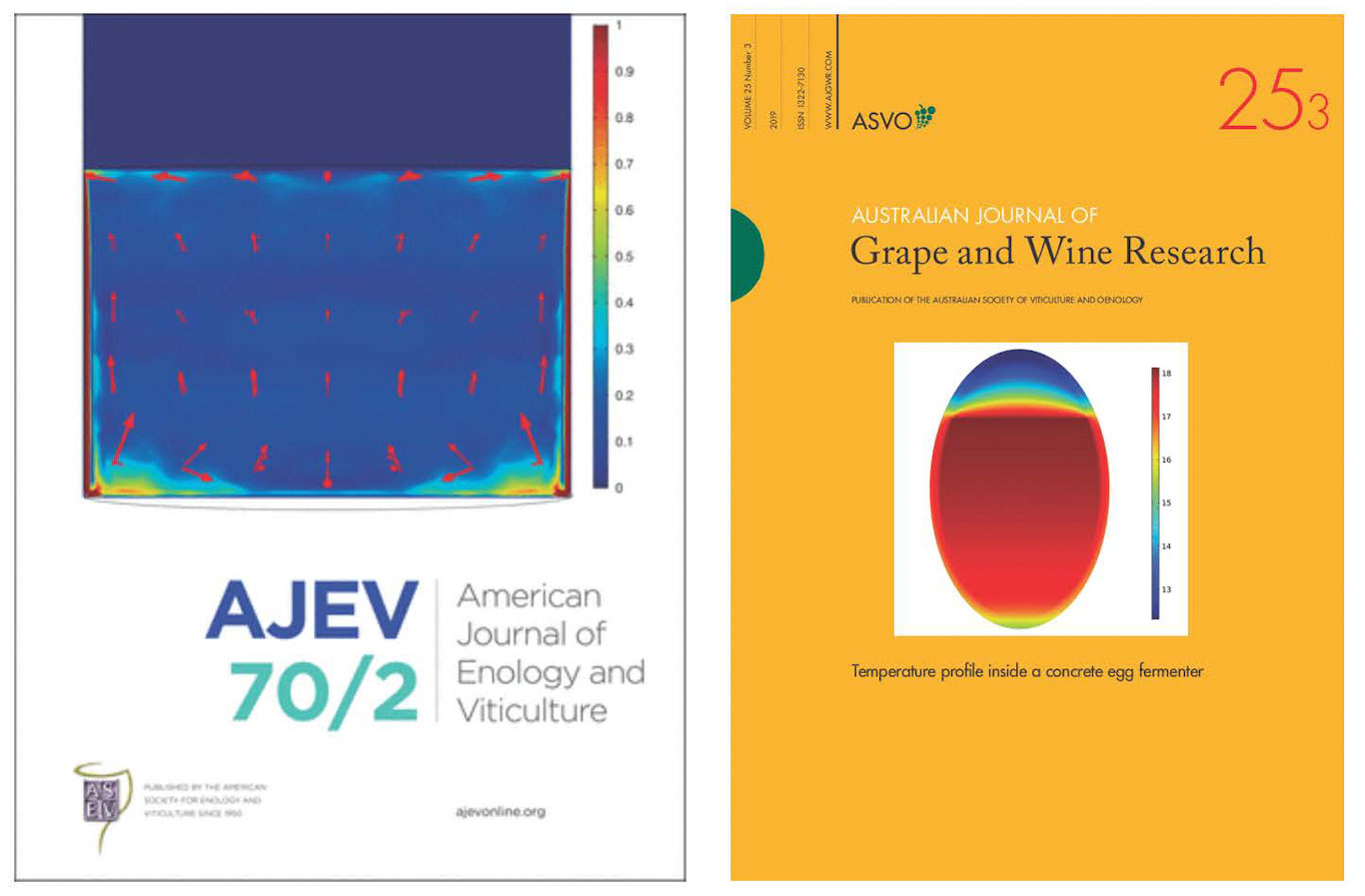
Dr. Block’s research group is currently working in several areas of wine research. His work in understanding and optimizing phenolic extraction in red wines (along with the Oberholster lab) has been especially productive over the last year and a half.
Konrad Miller is a chemical engineering PhD student in Dr. Block’s group that is working on modeling phenolic extraction as part of a larger project with Dr. Anita Oberholster’s lab. Red wine fermentations are difficult to model because they are performed in the presence of grape skins and seeds to ensure extraction of color and other phenolics. The presence of these solids results in two distinct phases in the fermentor, as the solids float to the top to form a “cap,” and the fermenting juice remains below. Modeling of red wine fermentations must, therefore, consider spatial heterogeneity to predict fermentation kinetics. Dr. Block’s group has developed a reactor-engineering model for red wine fermentations that includes the fundamentals of fermentation kinetics, heat transfer, diffusion, and compressible fluid flow combined using COMSOL finite elements software. This model allowed prediction of temperature gradients that build up in red wine fermentations, and the predictions matched previous experimental measurements from the Block lab (published in Biotechnology and Bioengineering earlier this year). After validation, this model was applied to examine how fermentor design (e.g. scale and aspect ratio) would affect fermentation mixing, temperature control, and chemical gradients and contribute to problem fermentations (published recently in AJEV).

Along these lines, temperature control and mixing were also evaluated for concrete eggs using the same modeling approach. The Block lab found that the concrete in the eggs acted more as an insulator than a heat sink, making effective temperature control difficult. They also found that mixing was better in a similar size “normal” cylindrical tank with temperature control. This paper was published recently in the Australian Journal of Grape and Wine Research.
Next, a mathematical model for phenolic extraction from skins and seeds was developed and validated using experimental data. It predicted the results of small-scale experiments quite well, including the effect of temperature on overall extraction (published in Molecules). Finally, the Block lab combined the two models, the spatial reactor engineering model and the phenolic extraction model to be able to predict phenolic extraction spatially in three dimensions and therefore control phenolic profiles in finished red wines (submitted). The results are very promising for being able to predict the effects of temperature, pumpover frequency, fermentor size and scale, and other factors on the final phenolic profile in red wine (submitted).
This modeling is important, because a good model will allow optimization of processing. For instance, if a winemaker has a specific phenolic profile in mind, he or she could use this type of model to perform “what if” scenarios to choose the best processing to achieve the desired profile. This approach can also be automated using optimization algorithms. In this way, the characteristics of grapes coming into the winery would be entered into the program, along with the desired final phenolic profile, and the optimization algorithm could then be used to specify all processing details to achieve the goal.
